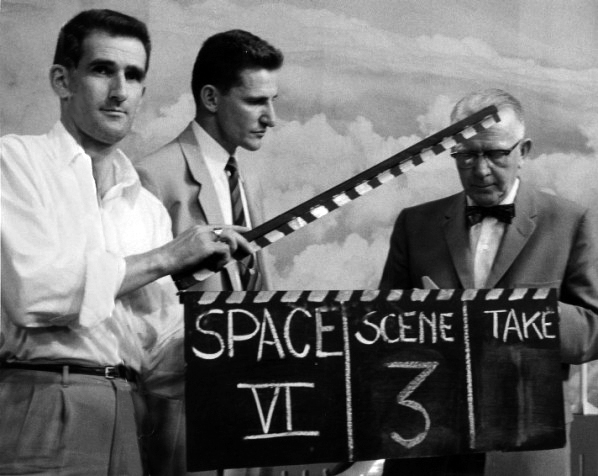Why I'm writing this post...
Most of my last post was about the birth of my son and the crazy antics that ensued as a result of sleep deprivation. I did however manage to sneak in a shameless plug for SiteMailCMS.com, a light weight content management system I developed that allows non technical folks to update their own website just by sending an email. Oh no, not another shameless plug!CUT!
Sorry! This isn't supposed to be a post about my favorite hobby project, really! The only reason I mention it is because at the end of my last post, I thanked John Somnez from SimpleProgrammer.com for spending some time brainstorming various marketing strategies with me. One of the things we discussed was creating a product demonstration video, which I did, so I thought I'd share my experience with anyone else who might be thinking of doing the same.
TAKE TWO!
What is a product demonstration video?
In a nutshell, a product demonstration video is a short video that let's potential customers see how awesome your product is by letting them see it in action. This isn't a training video, so don't feel obligated to show every single detail of how to setup and use your product. Cut to the chase and show your potential customers the "magic". They'll be plenty of time later to show them how the magic works, but first you have to show them how cool the trick is.What's the difference between a product demonstration video and an explainer video?
I think of it like show and tell from elementary school. The product demonstration video is the "show" and the explainer video is the "tell". Like peanut butter and jelly, the two often go together, but they are separate and distinct.For example, you can check out the explainer video I made for SiteMailCMS.com here (by the way, I highly recommend PowToon for creating professional looking explainer videos). The video briefly describes the product and the problem it solves, but you don't really get to see the product itself in action, which is why I created this product demonstration video. Part of the video describes the product and the problem it solves, but most of the video is devoted to showing how it solves that problem.
What is the goal of a product demonstration video?
To turn potential customers into actual customers. You want anyone who sees the video to be like MIND = BLOWN and to feel like they'd almost be stealing from you if they only paid the asking price because your product is THAT good.What do I need to get started?
If you're on a shoestring budget like me, your best bet is to go the do-it-yourself route. To create a product demonstration video, you'll need:- Recording software: I used Camtasia because some of my coworkers used it and I wanted to give it a try. It's pretty reasonably price and they offer a free trial.
- A decent microphone: My laptop's built in mic just didn't cut it, so I sprung for the G230 Stereo Gaming Headset by Logitech.
Great, now I'm ready to get started! Or so I thought...
Now that I had the required software and hardware, I thought I was going to simply press record and create a captivating product demonstration video. Not so much. My first attempt was awful. I didn't really know what I wanted to show or how. I wasn't quite sure what to say. There was too much dead air while I tried to figure out my next move. Too many "um's". I was missing a key ingredient......I needed a script!
At this point I started asking myself questions: Ok, think Brandon! What do you want to show? How easy it is to update your site using SiteMailCMS.com. Ok, how are you going to show that? Hmm...I guess I need an example website. Maybe I can show how to update the online menu for a fictitious restaurant? The answers to those questions became the basis for my script. Now all I needed to do was sandwich the meat of my script with two additional pieces: the introduction and the conclusion.The [very] brief introduction consisted of:
- A friendly greeting
- Stating the problem that my product solves
- A quick overview of how my product solves said problem
The [very] brief conclusion consisted of:
- Reiterating the problem that my product solves
- Reiterating how my product is the PERFECT solution to said problem
- A call to action
- Thanking the viewer for their time and wishing them well
Later on I was able to use the script as the description for my product demonstration video on YouTube as a kind of closed captioning and to improve search engine ranking.
Now I was REALLY ready to get started!
With that in mind, here are a few tips for creating the actual product demonstration video itself.The video, the whole video and nothing but the video
At first, I tried to record the video and the narration together. This proved to be more difficult than I originally anticipated as I was trying to focus on two things at the same time. I found it was much easier to record the video and the narration separately. I decided to record the video first, trying to leave the appropriate amount of time for narration by reciting the script to myself with my mic muted. That way I could just focus on the video, without having to worry about the narration.I also found that it was best to record the entire video in one sitting. When I tried to record the video in sections and then assemble those sections later, I could see how the video had been stitched together. For example, the mouse wasn't always in the exact same place between each shot. That drove me nuts, and I didn't want it to be a distraction. Recording the whole video in one sitting resulted in a more fluid, natural demonstration.
Also, I found that it was easier to record almost the entire screen and then zoom in and out as needed during editing.
For uploading videos to YouTube, TechSmith recommends a resolution of 1280 x 720 HD.
Adding the narration
Next I recorded the narration. In contrast to recording the video, I found that it was easier to record the narration in sections, which corresponded to each scene of the video. That way if I made a mistake, I didn't have to re-record the entire narration. When I put all of the narration together, it seemed to flow nicely. I really couldn't tell that the narration hadn't been recorded in one take.I tried not to read the script directly, I had it almost entirely committed to memory. I tried to speak slowly and clearly and put emphasis on certain key words or phrases so as to engage the listener.
One thing to keep in mind, the audio seemed louder when played from within Camtasia than when played from YouTube.



